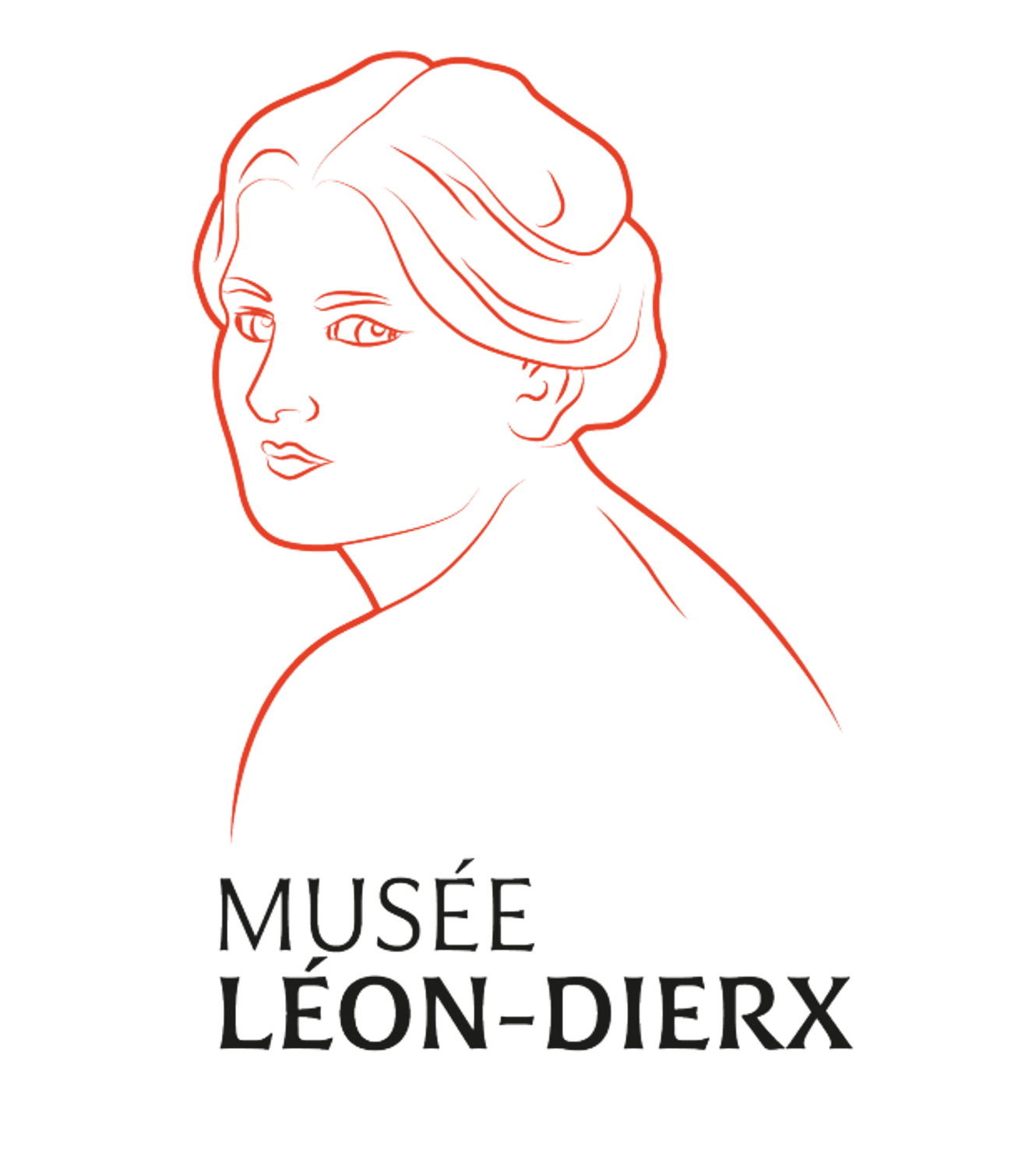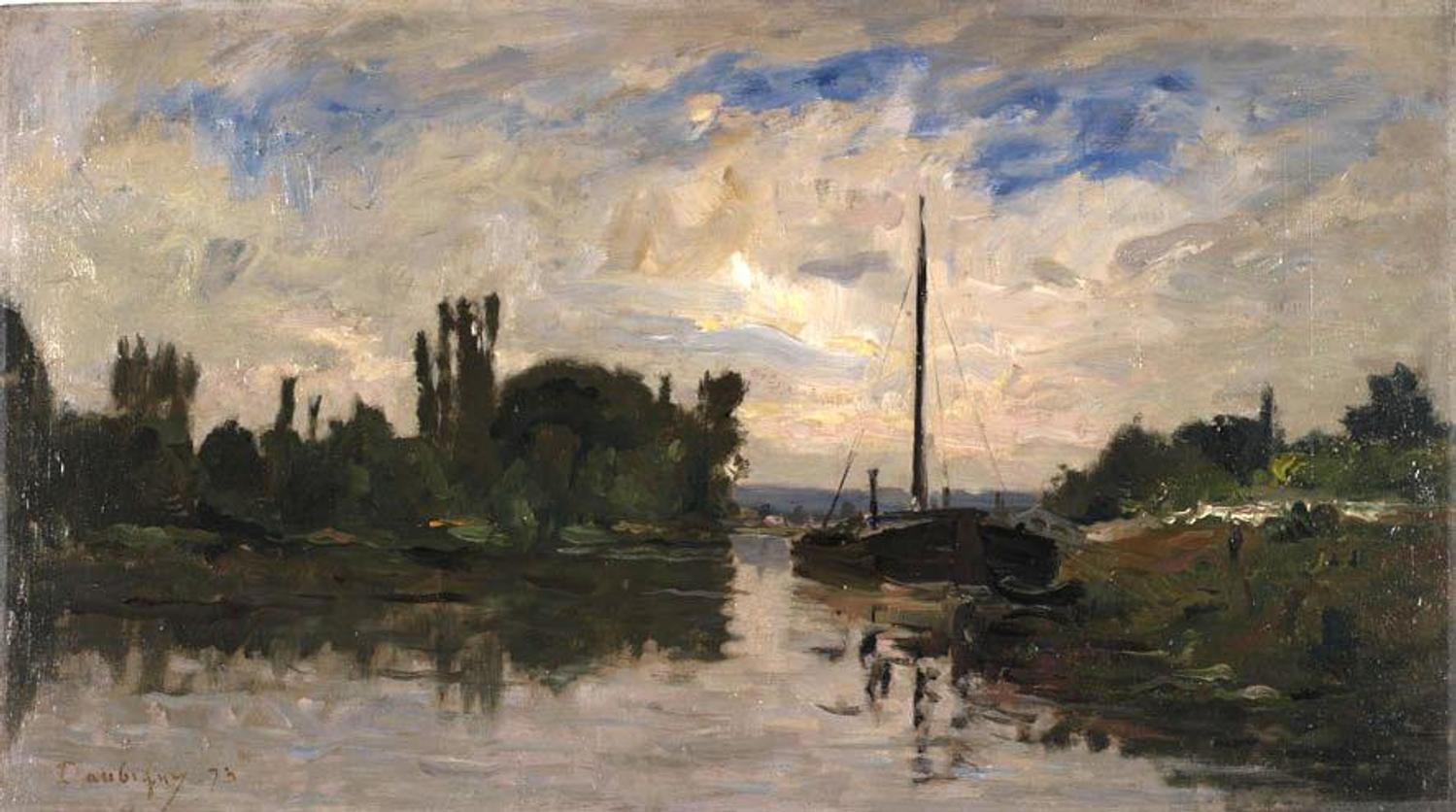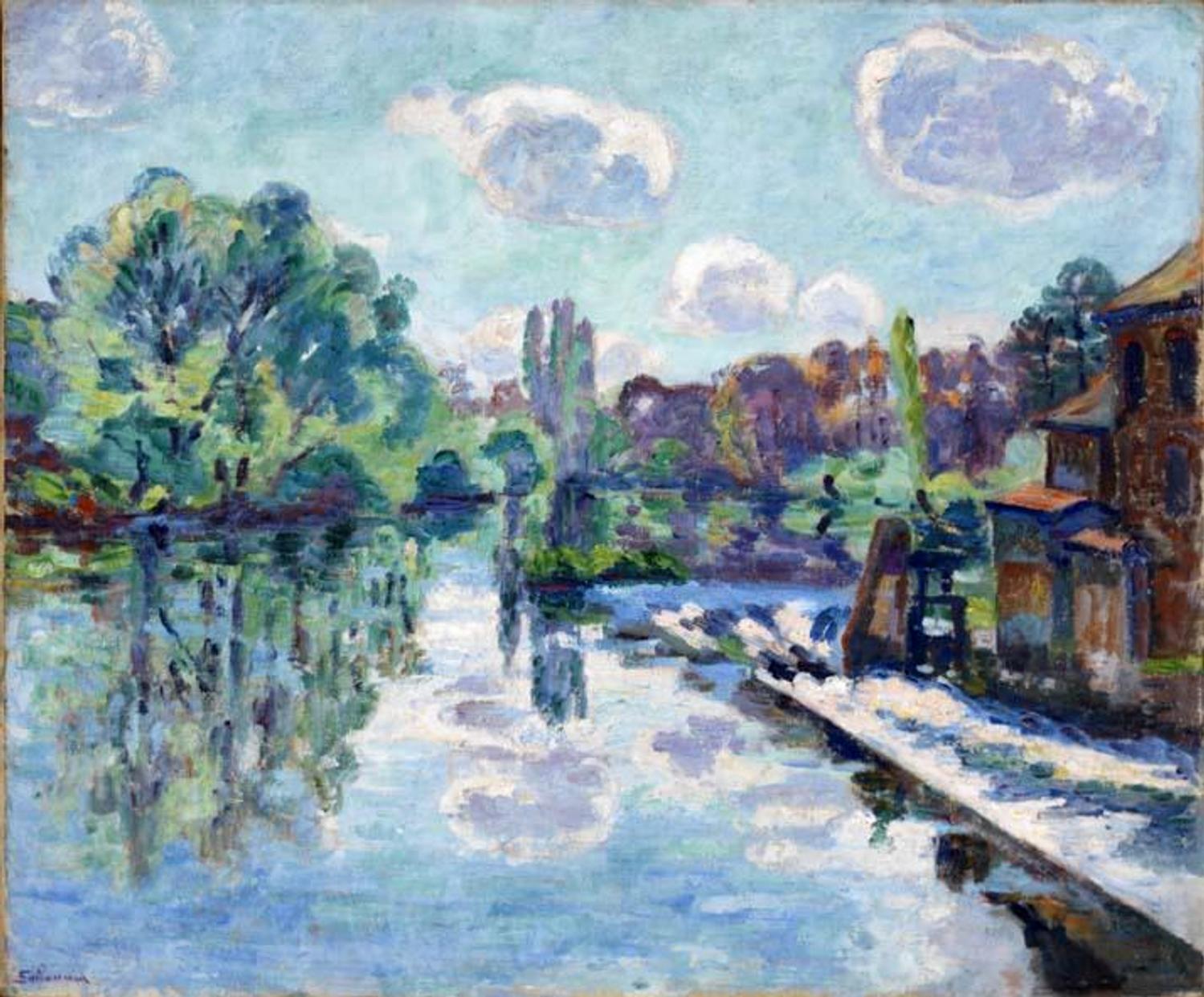THE IMPRESSIONNISTS AND LANDSCAPE
Charles François Daubigny, Péniche au bord de l'Oise, 1874
The high point of landscape painting
In the mid-19thcentury, «the great army of landscape painters», to quote the critic Castagnary, could be seen all over the roads of France, in particular around Paris, on the banks of the river Seine, in Normandy, in Brittany and in the south of France. The huge popularity of the landscape was even reflected in the works exhibited at the Salon.
A new generation of painters now worked alongside Gustave Courbet, Camille Corot, Theodore Rousseau, Eugene Boudin and Charles-François Daubigny: they were the future Impressionists who, in the 1860s, expressed their taste for open air painting. These young artists, close to Edouard Manet, were also influenced by Japanese art, through the etchings of Hokusai and Hiroshige, which could be seen in Paris and they retained, notably, the plunging viewpoints in the composition and the use of bright colours present in Japanese art.
Armand Guillaumin, Le Barrage, vers 1890
Colours and the present moment
How to express visual sensations, variations in the light, simply using colour? How to fix the fleeting moment? These questions met with different answers, from Paul Cezanne who, when structuring his landscapes, followed «the logic of organised sensations», to Claude Monet, tirelessly attracted by the movement of water and the effects of atmospheric variations. The application of the rule of optical mingling of colours, the fragmentation of the brushstroke associated with the decomposition of tints and the exclusive use of intense colours can be seen as some of the answers brought by the Impressionists and applied systematically by the Neo-Impressionists such as Georges Seurat, Paul Signac, then later Maximilien Luce and Henri-Edmond Cross.
At the same time, as from 1886, the painters of the Pont-Aven school around Paul Gauguin, attracted by the archaic charms of Brittany, came up with a new technique that exalted pure flat areas of colour, often outlined using a dark stroke, replacing the representation of the natural environment by the interpretation of an idea: this was pictorial Symbolism.
Over several decades, a large number of French or foreign painters attracted by France continued this research through works exalting colour, used as a powerful tool.







